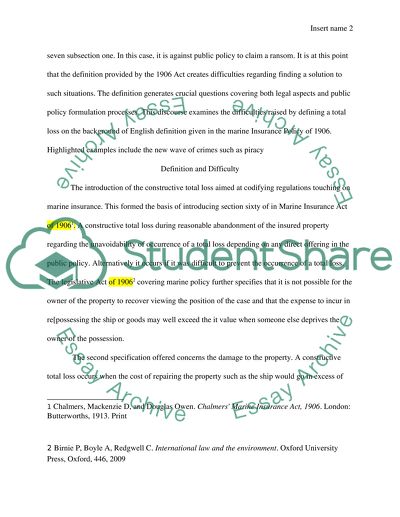Cite this document
(“Define the term 'Constructive Total Loss' for the purposes of the Essay”, n.d.)
Retrieved from https://studentshare.org/law/1642156-define-the-term-constructive-total-loss-for-the-purposes-of-the-marine-insurance-act-1906-what-are-the-difficulties-with-this-definition-use-case-law-examples-to-support-your-arguments
Retrieved from https://studentshare.org/law/1642156-define-the-term-constructive-total-loss-for-the-purposes-of-the-marine-insurance-act-1906-what-are-the-difficulties-with-this-definition-use-case-law-examples-to-support-your-arguments
(Define the Term 'Constructive Total Loss' For the Purposes of the Essay)
https://studentshare.org/law/1642156-define-the-term-constructive-total-loss-for-the-purposes-of-the-marine-insurance-act-1906-what-are-the-difficulties-with-this-definition-use-case-law-examples-to-support-your-arguments.
https://studentshare.org/law/1642156-define-the-term-constructive-total-loss-for-the-purposes-of-the-marine-insurance-act-1906-what-are-the-difficulties-with-this-definition-use-case-law-examples-to-support-your-arguments.
“Define the Term 'Constructive Total Loss' For the Purposes of the Essay”, n.d. https://studentshare.org/law/1642156-define-the-term-constructive-total-loss-for-the-purposes-of-the-marine-insurance-act-1906-what-are-the-difficulties-with-this-definition-use-case-law-examples-to-support-your-arguments.


